Walking down any street in any suburban neighborhood, you can get the pulse of what’s fashionable in the garden. Seeing home after home, you can note how acres of treated lawns blanket landscapes and oddly sheared evergreen shrubs skirt houses. I can only think anyone interested in design should be asking themselves, Is this pervasive aesthetic beautiful, experiential and useful — or is it really just a case of the emperor’s new clothes?
My interest lies in developing spaces that are exciting, experiential and thriving. Gardens can be much more than mere ornaments for the house; they can be grand extensions of the home. As a “new American garden” designer, I see beauty and utility in the wild garden. I design with plants that thrive on the site, and I use them en masse. These kinds of gardens contain appropriate plants, not just native plants, which is a confusing topic in and of itself. The designs are impressionistic models of any regional landscape. (Think Wolf Kahn–inspired garden design.)
We have seen more and more of these landscapes develop in public and commercial spaces as cutting-edge designers and landscape architects see value in bold herbaceous plantings. Homeowners too are finding this type of work appealing when shown models of successful projects that are beautiful, experiential and manageable.
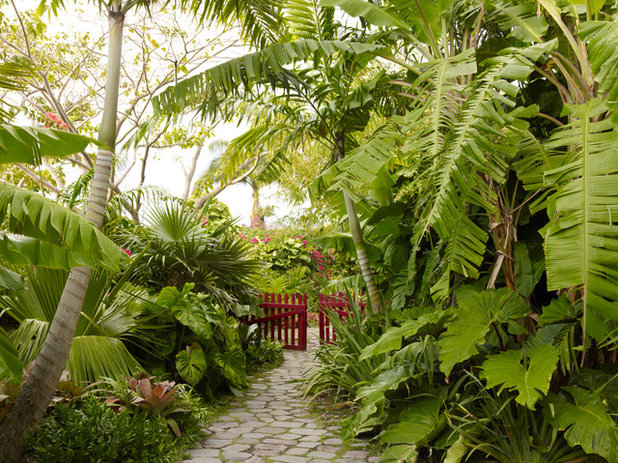
Raymond Jungles, Inc.
Raymond Jungles is one of the finer garden designers working today. This garden in the West Indies has bold herbaceous plants and trees placed to create a romantic experience. This isn’t natural but designed to feel of its place. Could this bold aesthetic be a model for your garden?
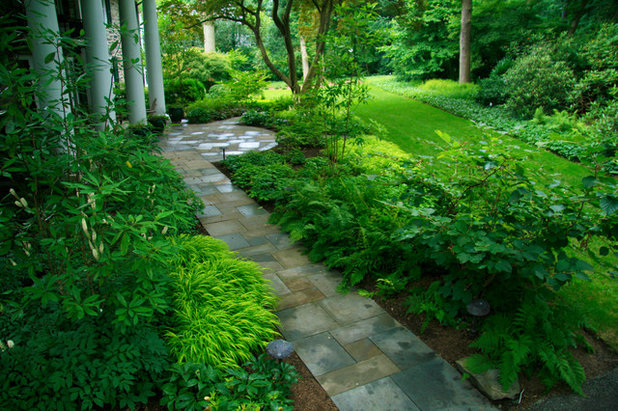
This walk from a circular patio receives guests from a parking court and moves them through a stylized woodland garden. The ground cover opposite the lawn consists of thousands of golden ragwort (
Packera aurea) plants that explode with color in the spring, initiating calls from the client expressing delight. A garden like this is simple, bold and manageable.
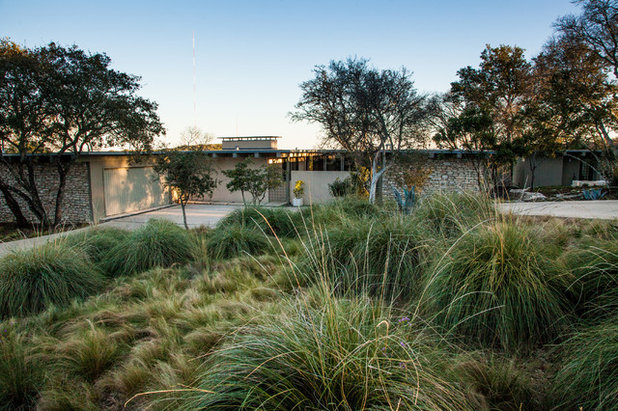
Robert Leeper Landscapes
Even in the arid landscape of Texas, plants can be grown with little water. These drifts of grasses are bold and simple. Like so many of these successful gardens, the focus is on composition, textures and durability, not just colorful blooms.
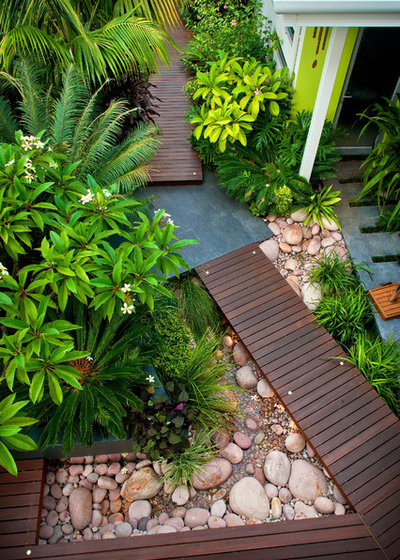
Cultivart Landscape Design
Stained decking is set on an angle here, making the layout all the more interesting. The nuanced addition of river stone makes this composition feel of the place and not of the supply yard. The narrow space has bold plants that soften the strong geometry of the walks and truly engage the visitor. It’s not a decoration; it’s a garden.
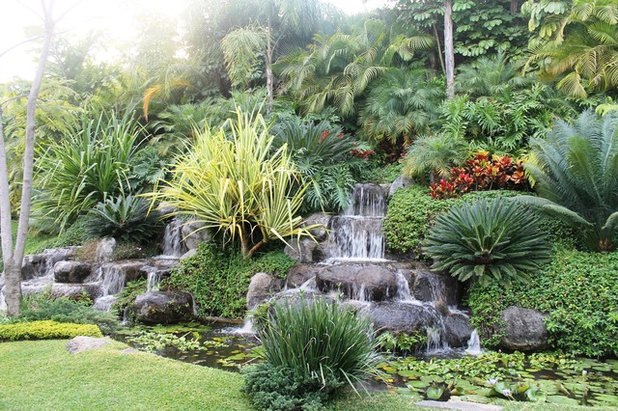
Francisco Fernandez/Aurora Palomar
This waterfall is set in a densely planted slope. The mass, depth and density of plants make the garden. The water is integrated beautifully and doesn’t feel like it just came out of a kit.
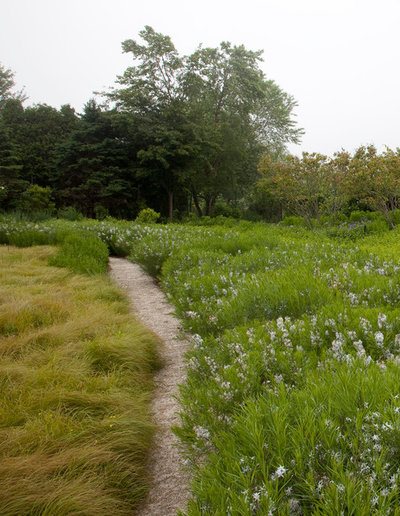
Jack deLashmet and Associates
The bold masses of perennials in this garden make it a magical place to be, and the rough gravel path invites exploration. Blocks of tried and true plants, like Hubright’s bluestar (
Amsonia hubrichtii), create a powerful aesthetic that’s manageable. These masses are a new way to bridge the gap between those who desire order and those who embrace the artful wild garden.
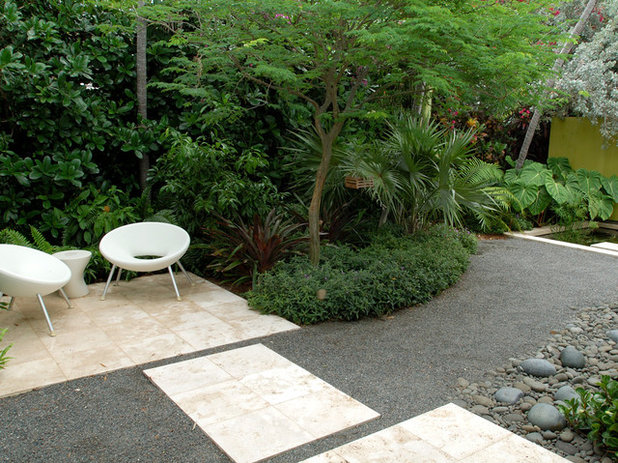
Raymond Jungles, Inc.
Here’s another Raymond Jungles installation in which lush plantings and powerful architectural details create impact in a serene place. Not everyone has the budget for beautiful stone and masonry walls, but anyone can start with small plants that will get large and that help manage the space (that is, outcompete the weeds). Seating can be defined with gravel until it can be updated to a possibly more desirable paving material.
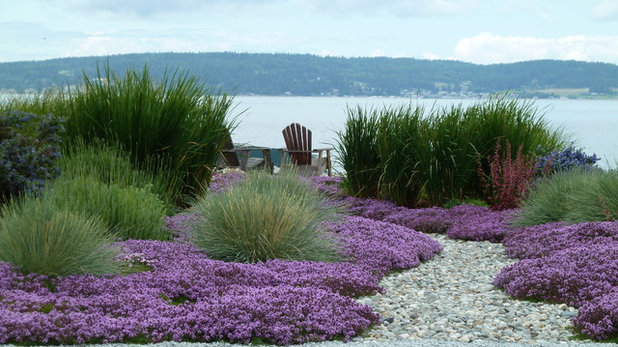
Lankford Associates Landscape Architects
Masses of blue oat grass and thyme here are simple enough to not distract from the grand landscape beyond. This beautiful composition is simple and affordable. The experience of moving through tall grasses and watching their movement in the wind is among my favorites in the garden. Their height and density act as a living wall that is a perfect solution for defining and privatizing a space.
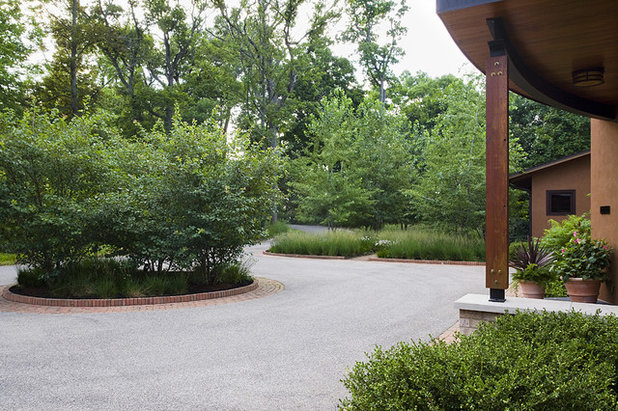
The Garden Consultants, Inc.
This governor’s court is designed with really nice materials. What I really love about this space is the grove of trees set in masses of perennials that leads guests off into the garden. The tighter and more off-center the trees, the better. I take great pleasure in sourcing gnarly trees for these type of installations.
Cultural expectations are powerful, and some folks will never be comfortable in these wild gardens, no matter how stylized. I grew up playing in fields and creeks, and I am sure this informs what I think is beautiful. We are seeing more designers embrace the wild garden, but there is still a dearth of actual models for this type of work. Yes, I want you to read my ideabooks, but they’re only the start to learn about this work. If you are really interested in outdoor spaces like these, seek them out and visit them — or, as I always recommend, take a hike in some wild place off the beaten path, and don’t forget your camera.





